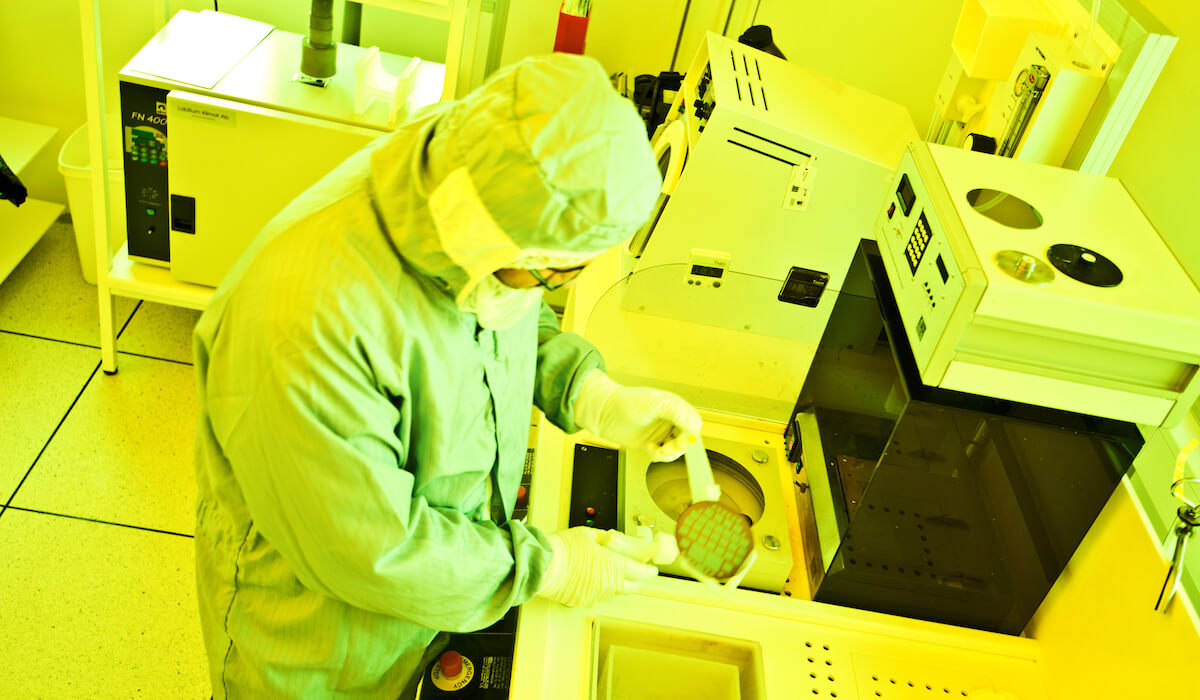Household hazardous waste includes quite a few products that are related to cleaning. In the list that I compiled for my book Rethink the Bins, 9 of the 35 common hazardous waste items are cleaning products of some kind: chlorine bleach, oven cleaners, paint thinners, and more.
There are safer ways to clean our homes. Baking soda, vinegar, and lemon juice come to mind. Commercial companies also make cleaning products that meet the Environmental Protection Agency’s Safer Choice guidelines. We can avoid paint thinner by choosing water-based instead of oil-based paints.
In the semiconductor manufacturing supply chain, cleaning is also a significant source of hazardous chemicals. Residues must be cleaned off the wafer between each processing step, and many cleaning chemistries rely on powerful, toxic ingredients. Unlike for household cleaning, these specialty chemicals are not easy to replace. Effective, non-toxic, off-the-shelf alternatives are not readily available. Lemon juice is not an option.
Toward Safer Semiconductor Cleans
Chemical suppliers are developing greener chemistries, but it is a difficult challenge. If photoresists are not completely stripped off, residues will lead to defects on the wafer. Photoresists developed to meet the requirements of advanced process nodes are especially challenging to clean. Any new cleaning formulation must, therefore, work as least as well as the one it is replacing.
Suppliers are always looking for greener chemistries. Some have developed products that are free of some of the most toxic chemicals, like N-methyl pyrrolidone (NMP) and tetramethylammonium hydroxide (TMAH). These formulations claim to be environmentally friendly and compliant with the EU’s REACH requirements.
Concentrating on Effective Cleaning
It’s not always possible to find an effective and safe replacement for every cleaning step. What are fabs to do when they find that they must keep using a hazardous cleaning chemical to achieve the required performance? Ironically, one option is to use the same hazardous but high-performing chemical in a more concentrated version. Instead of supplying the chemicals in ready-to-use concentration, the chemical producer offers formulations for customers to dilute on-site. Doing so is better environmentally. In a 3DInCites podcast episode, Diane Scheele from EMD explained why.
Concentrated process chemistries offer sustainability-related benefits:
- Reduced packaging. When suppliers provide the same cleaning power in concentrated form, they don’t need as many plastic bottles or drums.
- Lower transportation-related emissions. Product shipping is part of the carbon footprint. The lower the weight and volume being shipped, the more efficient.
Process chemical suppliers are perhaps borrowing a practical tip from the household products industry when they offer concentrated formulations. Why ship a gallon of liquid dishwashing or laundry detergent that contains mostly water when you can instead produce a highly concentrated version in a smaller container that offers the same number of uses? The concentrated formulation is much lighter, saving the expense of shipping water and reducing the energy required to transport the product.
Concentrated household cleaning products can be diluted to various concentrations depending on the application. When customers follow the directions, they can use the minimum amount of cleaning solution required to achieve the desired results. The product lasts longer, saving money and reducing the risk of damage to sensitive surfaces.
When it comes to on-site usage of semiconductor process cleaning chemistries, greater levels of dilution help with environmental sustainability. Sometimes manufacturers will find that a more dilute solution will clean just as effectively as what they were previously using. By switching to the diluted formulation, they save on chemical consumption and reduce hazardous waste generation.
The concept of dilution is not new, and neither is understanding its environmental benefits. An IEEE article from 1999 demonstrated the advantages of diluting an ammonium hydroxide/hydrogen peroxide/water (APM) solution. The research showed that the dilute formulation cleans as well as or better than the conventional one. The authors called the diluted APM an “environmentally conscious wet cleaning process.”
Fabs usually have the required solvents for on-site dilution. Many chemicals are diluted with deionized (DI) water. DI water is readily available. It is still important to conserve water and filter and recycle wastewater whenever possible. But on-site dilution eliminates the need to transport the water that pre-diluted formulations contain.
In some cases, customers might need to dilute a concentrated specialty cleaning chemistry with an acid or other solvent instead of water. Those solvents may still need to be shipped to the fab, but they are multipurpose. Facilities can order in bulk, reducing the amount of packaging required per liter of fluid. They also might be more likely to find a local source of common solvents than a local supplier of specialty chemicals. The shorter the distance products travel, the lower the transportation-related emissions.
It would be great if we could clean photoresists and contaminants off silicon wafers without using any hazardous chemicals. Suppliers are making some progress in that direction. Meanwhile, on-site dilution of concentrated formulations looks like a good approach.



















